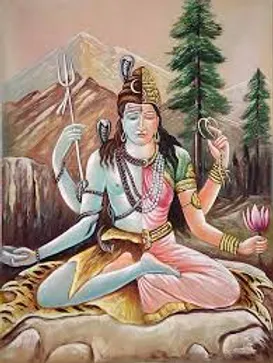Hijras, often regarded as the unacknowledged taboo of India, they hold a significant yet complex position within the tapestry of Hindu mythology. Despite their integral role in cultural and religious narratives, they are marginalized, relegated to a lower social stratum, and tend to form closely-knit communities. Let’s delve into understanding more about their unique place in society.
Hijras are traditionally considered a third gender in India, neither male nor female, but possessing qualities of both. This concept of a third gender is not just a social construct but is deeply rooted in Hindu mythology, which acknowledges and reveres the fluidity of gender.
Hijras and their patroness
Bahuchara Mata is a Hindu goddess with two unrelated stories both associated with transgender behavior. One story is that she appeared in the avatar of a princess who castrated her husband because he would run in the woods and act like a woman rather than have sex with her. Another story is that a man tried to rape her, so she cursed him with impotence. When the man begged her forgiveness to have the curse removed, she relented only after he agreed to run in the woods and act like a woman.
Another popular reference is rather romantic. One of the forms of Lord Shiva is a merging with Parvati where together they are Ardhanari, a god that is half Shiva and Half Parvati. Ardhanari thus is again worshipped by the Hijras.

Hijras and Lord Ram
Lord Ram is one of the avatars of Lord Vishnu. In some versions of the Ramayana, when Ram leaves Ayodhya for his 14-year exile, a crowd of his subjects follow him into the forest because of their devotion to him. Soon Rama notices this, and gathers them to tell them not to mourn, and that all the “men and women” of his kingdom should return to their places in Ayodhya. Rama then leaves for his exile and upon returning after 14 years, he finds that the Hijras, being neither men nor women, have not moved from the place where he gave his speech. Impressed with their devotion, Ram grants Hijras the boon to confer blessings on people during auspicious inaugural occasions like childbirth and weddings.

Urvashi’s curse on Arjuna
Arjuna refuses the advances of Urvashi, alleging that he had heard of her relationship with his ancestor Pururava, and hence she had the status of a mother, equal in respect to Kunti. Urvashi, annoyed at this, cursed him that he would become a eunuch who would have to live among women, singing and dancing. On Indra’s request, and regretting her anger, Urvashi reduced her curse to a period of one year of Arjuna’s choice.

Arjuna as Ahiravan’s wife
In the Mahabharata, before the Kurukshetra War, Ahiravan offers his lifeblood to goddess Kali to ensure the victory of the Pandavas, and Kali agrees to grant him power. On the night before the battle, Ahiravan expresses a desire to get married before he dies. No woman was willing to marry a man doomed to die in a few hours, so Arjuna as Brihinala marries him. The next day on the battle field Ahiravan dies and Brihinala performs the rituals of a widow i.e. forfeiting the sindoor (vermillion) and breaking the bangles. In South India, Hijras claim Ahiravan as their progenitor and call themselves “aravanis.”

Lord Vishnu as Mohini
Lord Vishnu takes form of Mohini to slay Bhasmasura. It is believed that Mohini was so beautiful and enchanting that Lord Shiva upon seeing her was so mesmerized that he started running behind her. This made his consort Goddess Parvathi very unhappy and embarrassed. Seeing this Lord Vishnu takes back his original form.

The Role of Hijras: From Myth to Reality
Hijras today, while revered in some aspects, especially in ceremonies and rituals believed to bring blessings or ward off evil, face significant societal challenges. Their revered status in mythology contrasts starkly with their marginalized position in contemporary society. Despite being recognized legally as a third gender by the Supreme Court of India in 2014, Hijras continue to grapple with issues of discrimination, social exclusion, and economic hardships.
A Call for Inclusion and Understanding
Understanding the historical and mythological contexts of Hijras can pave the way for greater acceptance and inclusion in today’s society. By revisiting the stories and roles that Hijras have played in Hindu mythology, we can appreciate the rich diversity of human identity and expression that has been acknowledged for millennia.
In recognizing the divine and the human aspects of the Hijra community, we are reminded of the complexity of gender and the spectrum on which it exists. The stories of Ardhanarishvara, Shikhandi, and other mythological figures challenge us to see beyond binary gender definitions and embrace the rich tapestry of human diversity.
As we delve deeper into the narratives of Hijras in Hindu mythology, we uncover not just tales of gods and mortals, but also lessons on empathy, acceptance, and the recognition of every individual’s inherent dignity. It is through understanding and embracing our shared heritage that we can hope to build a more inclusive society, where every person, irrespective of their gender identity, is respected and valued.
Conclusion
The Hijras’ presence in Hindu mythology is a testament to the ancient recognition of gender diversity. These narratives offer powerful insights into the complexities of identity and the spectrum of human experience. By reflecting on these stories, we can foster a more inclusive world that honors and celebrates the diversity that enriches our collective human experience.

Leave a comment